Whether you are setting up a new bird feeder or getting ready to put an old feeder away for the season, it's up to you to maintain a safe and healthy place for your birds to feed. Use this checklist to make sure you have covered everything necessary for your birds to have a great dining experience.
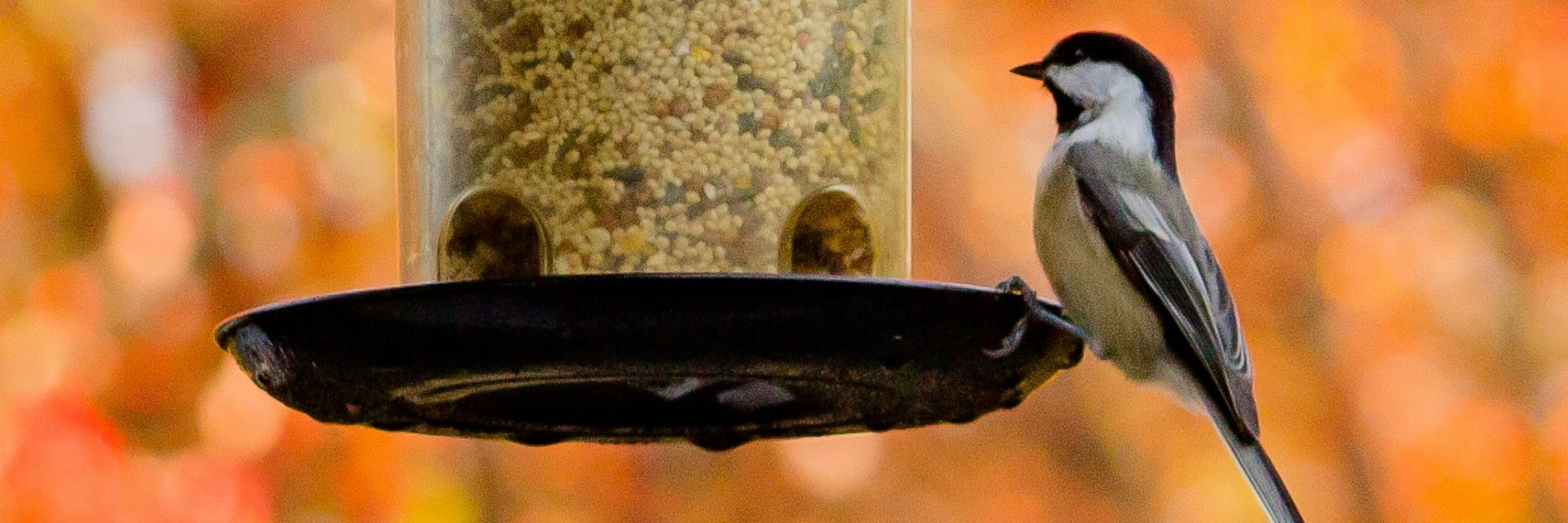 Setting up a new feeder
Setting up a new feeder
When opening a new feeder, there are a few simple steps you'll need to take:
Wipe the new feeder down with birdhouse cleaner or a mix of bleach and water (1 part bleach to 9 parts hot water). This will help remove any residue that might have gotten in the feeder at the store, in shipping or in storage.
Choose your location thoughtfully. The type of feeder you are putting up and the kinds of birds you hope to attract will influence where you hang the bird feeder.
Feeders require frequent re-filling and cleaning. Choose a location that you can easily check so you take care of both whenever necessary. The easier a feeder is for you to get to, the more likely you are to maintain it properly.
Most songbirds like to have a tree or perch nearby where they can go when feeders are busy or as cover to hide from birds of prey.
Many larger birds, on the other hand, are more comfortable feeding on the ground or on very stable feeding platforms. If you are trying to attract mourning doves, you'll pick a very different location than if you are putting out hummingbird feeders.
You also want to keep bird food thieves (also known as squirrels) in mind when choosing a location. There are some great products out there that can help keep squirrels from taking over your bird feeder, but a location squirrels have difficulty getting to is a good start.
Get the right hardware. There is an entire article dedicated to Tricks for Hanging A Bird Feeder, so here's the most important question to ask yourself right now: where is the best place to watch birds?
If it's out a large window in your home, you can decide if you want to get a window mount. They can hold a few pounds of bird seed or hummingbird nectar and a couple of birds. You wouldn't want a window mount for a large feeder, but for an up-close birdwatching experience, nothing beats a window mounted feeder.
Another up-close option is a deck-mounted hanger. It clamps on to the edge of your deck and allows you to hang up larger bird feeders. The location you choose for the bird feeder will influence the hanging hardware you choose.
Pick the right bird food for the birds you want to watch. Here are a few favorite birds and their favorite treats:
Nectar for hummingbirds.
Black oil sunflower seeds for goldfinches, cardinals and most other common songbirds.
Suet for chickadees, nuthatches, woodpeckers and titmice.
Jelly or fruit for orioles.
Mealworms for bluebirds.
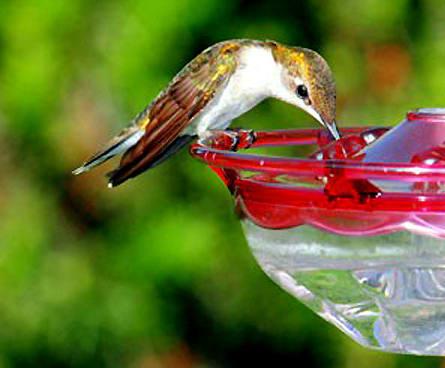
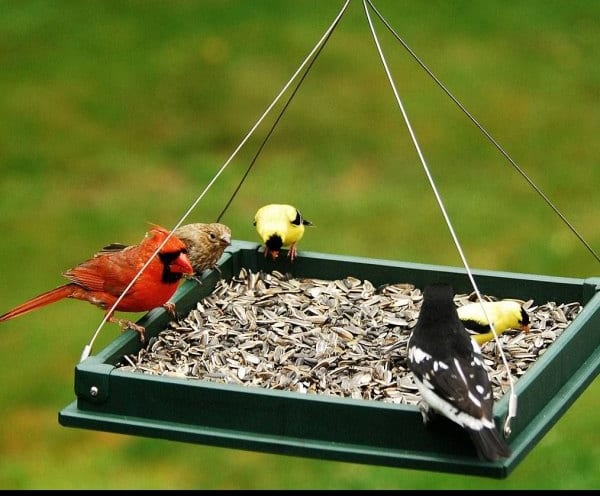
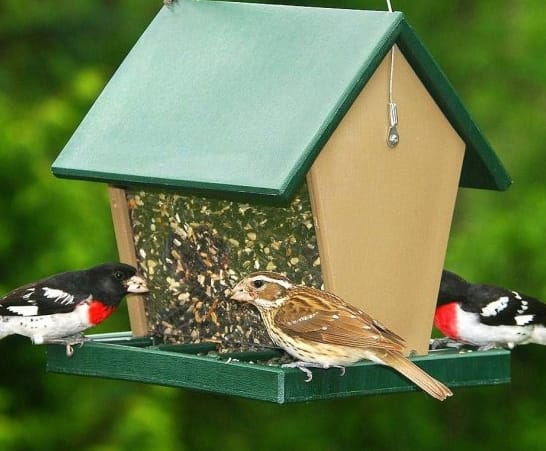
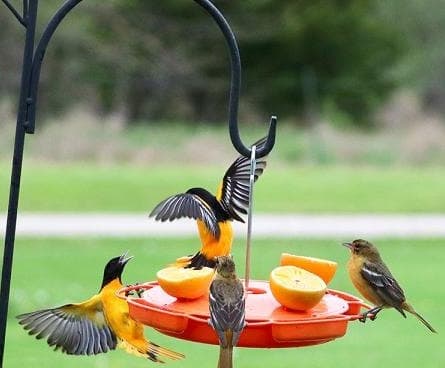
Making your feeders safe
It's important to clean your bird feeder from time to time. Whether you have a hummingbird feeder filled with nectar or seed feeder, you should clean your feeder as often as necessary. Mold and feces are not always easily visible, so you may just want to clean your feeders regularly just to be safe.
At the end of the season, you should do a very thorough cleaning.
Before you re-stock your birdseed, check to see if the remaining seed in the feeder has gotten wet. Wet birdseed will quickly get moldy and can make birds sick. If the bird seed is not dry, throw the bird seed away. It's not worth taking a chance with your birds' health.
Nectar in hummingbird feeders can go bad in a few days. The warmer the weather, the faster the nectar goes bad. A good rule of thumb is to wash your hummingbird feeder each time you refill it in warm weather.
Clean outside and then inside of the feeder. Instructions for cleaning the feeder are listed below.
How to clean your bird feeder:
Keep yourself safe by using gloves to handle dirty bird feeders.
Empty your feeder and scrape off any feces the birds left on your feeder.
Buy cleaner designed for cleaning bird feeders, or make your own. Mix chlorine bleach with hot water (9 parts water and 1 part bleach) to make a homemade cleaner.
Use an old, clean clean toothbrush and the cleaning supplies to get your bird feeder clean.
Use clean water to rinse the bird feeder.
Let your bird feeder dry out in the sun.
Wash your hands when you are done.
Squirrels are often more than just inconvenient thieves that steal your bird seed. Squirrels have sharp claws that can do a lot of damage to bird feeders. As squirrels climb on feeders or scratch at them to get at bird seed, they may tear pieces off of wooden or plastic bird feeders, leaving sharp edges that can be dangerous for birds.
Unless you have a metal feeder, make sure to check for sharp edges on your feeder each time you take it down for cleaning. A quick look can help you locate any dangerous edges that need to be hammered in or sanded down. If a nail has come loose, make sure you are careful hammering it back in. Some bird feeders have glass pieces that are fragile (and sharp when broken).
Most home improvement stores have sanding blocks you can use to sand off sharp edges from wood bird houses, and often work quite nicely on plastic too.
Avoiding squirrel damage in the first place
To help avoid repairs from hungry and aggressive squirrels, you can do your best to keep squirrels from getting to your feeders. There are several different things you can do to discourage them.
Make bird feeders difficult to reach. This can be accomplished in a variety of ways.
Mount your feeders 8-10' high and away from trees. Squirrels can only jump so high...
Put up squirrel guards. They keep squirrels from getting to the feeders.
Add a slinky to your shepard's hook. It works amazingly well. Squirrels are afraid to climb on it.
Make it hard for squirrels to eat at bird feeders. There are a lot of different squirrel-proof bird feeders out there. From collapsing perches or weight-sensitive gates over the food, to suet or seed in cages the squirrels simply can't get into, you can find an attractive feeder that makes it very difficult for squirrels to get to your bird food.
Buy bird food that squirrels don't want. Then there is always the option of using bird food that squirrels don't like.
Safflower seeds, like sunflower seeds, will attract lots of different birds; however, safflower seeds are not nearly as appealing to squirrels. Substitute safflower seeds for your sunflower seeds and see the difference it makes.
Offer seed or suet with cayenne pepper included. The birds still eat the seeds (the pepper isn't a problem for them) while the squirrels avoid it.
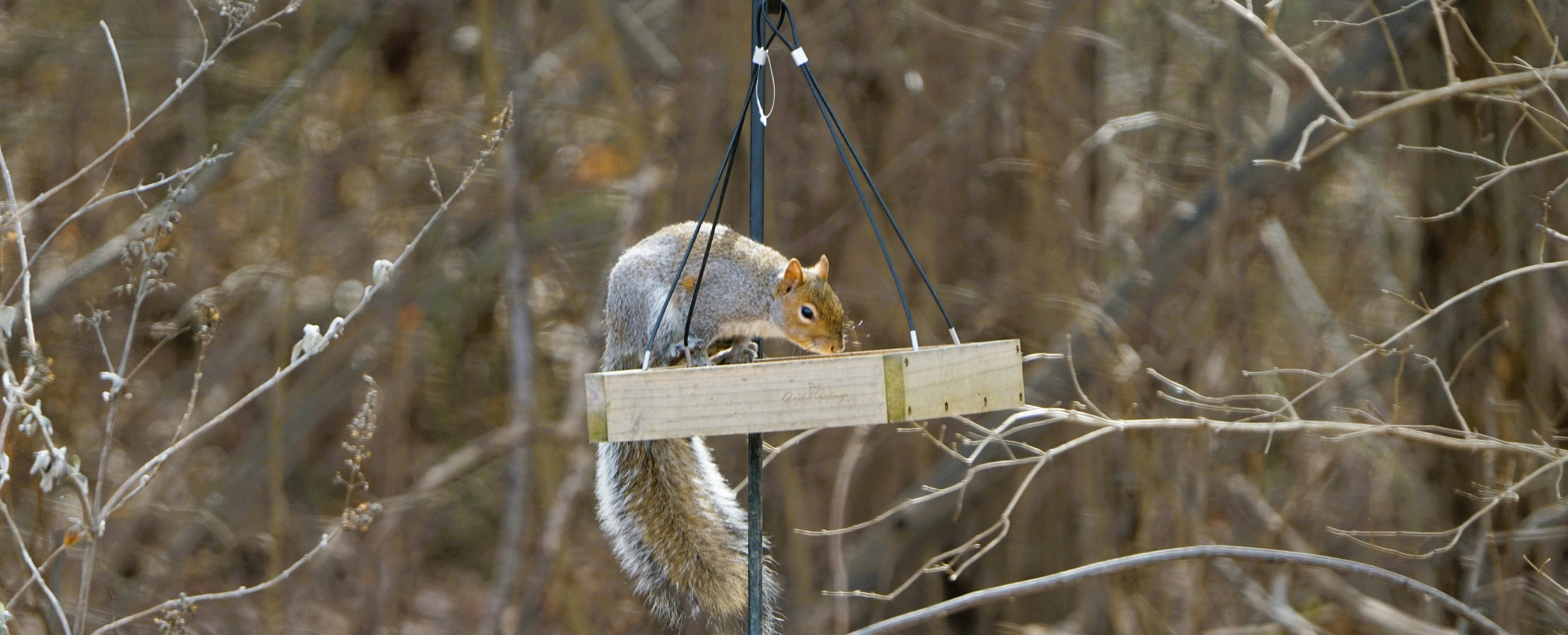
Maintain your bird feeders and neighborhood birds will reward you with visits year after year. Many birds don't migrate so if you take care of your feeders and leave them up, you may even be able to enjoy bird watching year round.